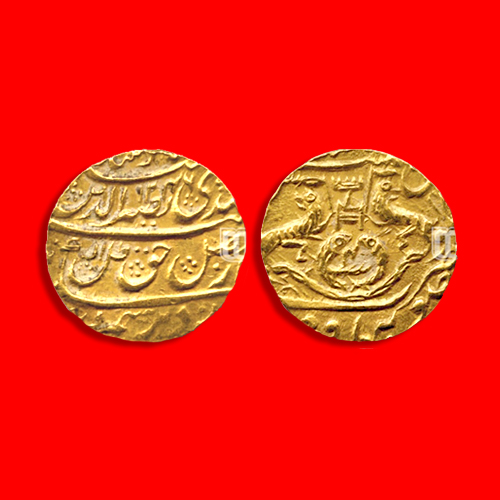Gold Ashrafi of Awadh Princely State
2021-04-28 Wed
The roots of Awadh history can be traced backed to the ancient kingdom of Kosala with Ayodhya as its capital. As per one of the most popular and followed versions of Ramayan, Awadh was the kingdom of Rama. This region was ruled by different dynasties over the years namely Delhi Sultanate, Sharqi Sultanate, Mughal Empire, East India Company, and the British. Sharqi Sultanate of Jaunpur ruled Awadh for eighty-four years. It was made a part of the Mughal Empire by Emperor Humayun in 1555 AD.Awadh was granted to Sheikh Abdul Rahim by Emperor Jahangir. Sheikh Abdul Rahim built Machchi Bhawan which later became the seat of power from where his descendants controlled the Subha.
In 1722 AD, the Mughal Emperor appointed Saadat Khan as Nawab of Awadh and he established his capital at Faizabad. The fourth Nawab shifted the capital city from Faizabad to Lucknow. Under the Nawabs, architecture, music, and dance flourished. Lucknow city became the cultural capital of not only Awadh but also of entire North India.
Herewith, the gold Ashrafi is issued by Nasir-ud-din Haider of Awadh Princely state. It was minted at Lucknow in 1252 AH. The legends on the coin read “King’s Name and title, AH date” and “Crown flanked by rampant lions holding flags, two upright fish below”.
Image Courtesy: Mintage World
Latest News
-
Ghiyath Shah as Heir Apparent
2025-09-25 ThuGhiyath Shah was the ruler of the Malwa Sultanate, reigning from 1456 to 1500. From 1456 to 1469, he...
-
Malwa Sultan Mahmud Shah Silver Coins
2025-09-11 ThuMalwa Sultan Mahmud Shah minted silver coins in round and square flans. <br><br> For round coins,...
-
Malwa Sultan Mahmud Shah Billon coin
2025-08-26 TueMalwa Sultan Mahmud Shah's billon coins followed three weight standards: 100 rati, 96 rati, and 80 r...
-
Fascinating Archaeological Facts on Postage Stamps - 91
2025-08-23 SatRhinoceros is one of the oldest land mammal species existing in India. There are five species of rhi...
-
Fascinating Archaeological Facts on Postage Stamps - 90
2025-08-23 SatUthiramerur, a Village in Kanchipuram, Tamil Nadu, is notable for its Temple inscriptions that descr...

